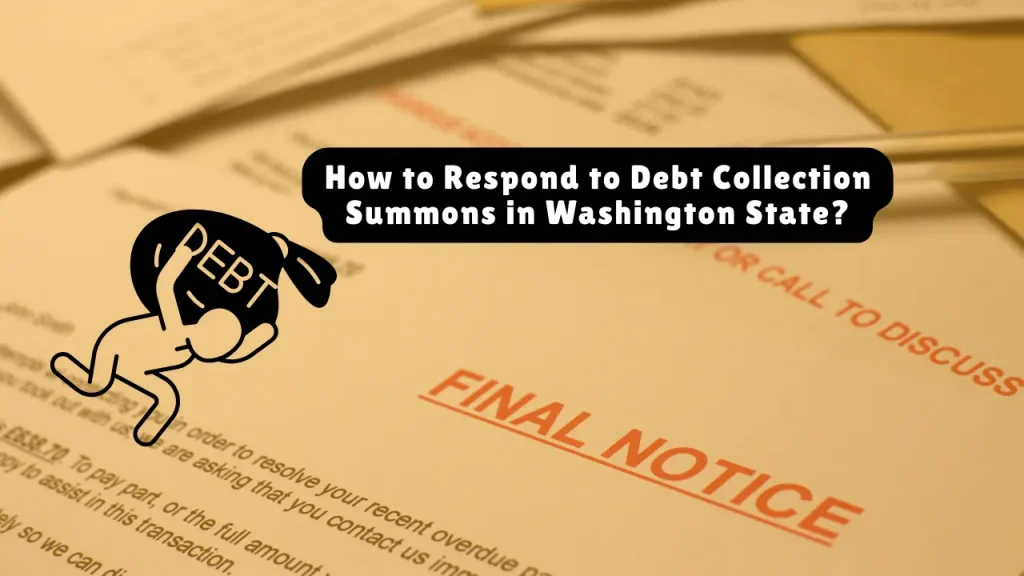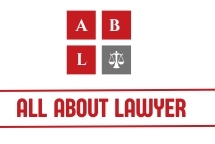How to Respond to Debt Collection Summons in Washington State?
Getting served a Summons and Complaint for debt collection in Washington can feel overwhelming—but acting quickly and correctly can protect your income, assets, and credit. Washington law gives you specific rights and defenses, but you only have a short window to respond. This guide walks you through everything—from the legal deadlines to filing strategies, defenses, and what to do after your response.
Table of Contents
Understand the 20-Day Clock (and Other Deadlines)
When you’re served with a debt collection lawsuit, the countdown begins:
| Method of Service | Response Deadline |
| In-person (within Washington) | 20 days |
| By mail (in Washington) | 23 days (add 3 days) |
| Out-of-state service | 60 days (or 63 by mail) |
| Service by publication | 60 days |
Note: Exclude the day you were served. If the 20th day lands on a weekend or holiday, your response is due the next business day.
Why it matters: Missing your deadline results in a default judgment. That allows the creditor to:
- Garnish up to 25% of your wages
- Freeze your bank accounts
- Place liens on property
- Collect with 12% post-judgment interest
Read the Summons & Complaint Carefully
You need to understand what you’re being sued for and whether the creditor followed proper procedures. Look for:
Key Elements:
- Creditor name: Are they licensed to collect debt in WA? (Check with the WA Department of Licensing)
- Amount and basis of debt: Do you recognize it?
- Statute of Limitations (SOL):
Related article: How to Respond to Debt Collection Summons in Alaska?
| Debt Type | Limit | Starts from |
| Credit cards | 6 years | Last payment |
| Medical bills | 6 years | Date of service |
| Oral agreements | 3 years | Date of breach |
| Auto loans | 4 years | Last payment |
- Proper service: If the summons was delivered to the wrong person or address, it may be invalid.
Craft Your Legal Response
You can respond in two main ways:
A. File a Notice of Appearance (NOA)
- Tells the court you’re participating
- Prevents a default judgment
- Doesn’t dispute the claims
B. File an Answer
A full legal response—paragraph-by-paragraph—to the Complaint.
Format Requirements (under CR 10 & CR 8):
- Use numbered responses: Admit, Deny, or Deny for lack of knowledge
- Caption the document properly with court info and case number
C. Include Affirmative Defenses (CR 12 & 8)
These must be included in your Answer or they are waived:
- Statute of Limitations: Debt is too old
- Mistaken Identity: Wrong person sued
- Already paid: Attach proof (e.g., bank records)
- Invalid debt ownership: Ask for chain of title
- FDCPA/CPA violations: Harassment, false threats, illegal calls
D. Add Counterclaims (Optional)
If your rights were violated under the FDCPA or Washington’s Consumer Protection Act, you can countersue.

File and Serve Your Answer Properly
- Draft your Answer
Use free templates from Washington Law Help or tools like SoloSuit. - Make 3 Copies:
- One for court
- One for the plaintiff’s attorney
- One for your records
- One for court
- File with Court Clerk:
- Go to the county’s Superior Court listed in the summons
- Pay the filing fee (ask for a fee waiver if needed)
- Go to the county’s Superior Court listed in the summons
- Serve the Plaintiff:
- Send a copy by certified mail to the creditor’s attorney
- Fill out and include a Certificate of Service
- Send a copy by certified mail to the creditor’s attorney
After Filing—What’s Next?
A. Monitor the Case
Use the court’s online portal or check in with the clerk to track updates.
B. Fight Back with Motions or Discovery
- Request Debt Validation: Within 30 days, creditors must show original contracts and payment records.
- Motion to Dismiss: If the SOL expired or service was improper.
- Discovery: Ask the creditor for documents proving the debt is valid and collectible.
C. Negotiate a Settlement
- Best time: After you file your Answer
- Offer: 30–50% lump sum or payment plan
- Demand terms in writing, including dismissal of the lawsuit and deletion of negative credit reporting
Avoid These Costly Mistakes
| Mistake | Consequence |
| Ignoring the summons | Default judgment, wage garnishment |
| Admitting to the debt partially | Resets the SOL clock |
| Failing to prove your defenses | SOL or identity issues need documentation |
| Missing court appearances | Automatic judgment against you |
Garnishment & Exemptions in Washington
If a judgment is entered, creditors may garnish wages or bank funds.
Wage Garnishment Limits:
- RCW 6.27.150: Either 35× federal minimum wage or 75% of disposable income—whichever is greater.
- Private student loans: Exempt up to 85%
- Consumer debt: Exempt up to 80%
Bank Account Protection:
- RCW 6.15.010 & RCW 6.27.140: Up to $2,000–$5,000 exempt
- New WA law: Automatic protection for $500–$1,000 without paperwork
Action: File exemption claim forms within deadline if your money is protected. If the creditor objects, a court hearing must occur within 14 days.
Legal Help & Free Resources
- Washington Law Help: www.washingtonlawhelp.org
- Northwest Justice Project: Free legal aid for low-income residents
- County self-help centers: Kits, forms, and advice
- SoloSuit: Guided form tools ($99–$199 with attorney review)
Bankruptcy as a Last Resort
If the debt is overwhelming or lawsuits are piling up:
- Chapter 7: Quick discharge of unsecured debts (qualify based on income)
- Chapter 13: Court-managed repayment plan (3–5 years)
- Filing stops garnishment, lawsuits, and creditor calls
Timeline & Checklist
| Step | Action | Deadline |
| 1 | Read Summons & Complaint | Immediately |
| 2 | File Answer or Notice of Appearance | Day 20/23/60 |
| 3 | Serve copy + Certificate of Service | Same day |
| 4 | Check court file regularly | Ongoing |
| 5 | Assert exemptions if garnished | Upon writ notice |
| 6 | Negotiate settlement or respond to motions | Post-filing |
FAQs
I was served by mail—do I get more time?
Yes—add 3 days to your 20-day window.
The debt isn’t mine. What now?
Deny knowledge in your Answer and request validation.
Can I counter-sue the collector?
Yes—if they broke FDCPA or WA CPA laws (e.g., illegal calls, threats).
Is legal help available?
Yes—free and low-cost options are widely available in Washington.
Final Thoughts
Responding to a debt collection lawsuit isn’t just a formality—it’s your chance to fight back. With the right strategy, you can get the case dismissed, settle for less, or even turn the tables on unethical debt collectors.
Key Takeaways:
- Respond within 20 days (or extended period if by mail/out-of-state)
- Deny claims, assert defenses like SOL or identity theft
- File and serve your Answer correctly
- Negotiate smartly and document everything
- Use free resources like Washington Law Help
“Over 80% of debt lawsuits end in default. Your Answer alone can flip the outcome.” — Evergreen Bankruptcy Attorneys
About the Author

Sarah Klein, JD, is a former consumer rights attorney who spent years helping clients with issues like unfair billing, product disputes, and debt collection practices. At All About Lawyer, she simplifies consumer protection laws so readers can defend their rights and resolve problems with confidence.
Read more about Sarah
